We enjoyed breakfast in our Polonnaruwa guesthouse and then made our way to the ancient city to explore the ruins.
Polonnaruwa was the second ancient capital of the Sinhalese Kingdom, the heyday of the city being in the 12th century. As Anuradhapura fell victim to many invasions by India, some Kings (starting with King Aggabodhi IV in 667 AD) chose to rule from Polonnaruwa due to its strategic location further away from India. The city was finally captured in 993 following the final sack of Anuradhapura and was made the capital of Rajahrajah's short lived Hindu kingdom. Recaptured by the Sinhalese king Vijayabahu, it was retained as the new Sinhalese capital. The city was largely planned by his successors, Parakramabahu (1153-86) and Nissankamalla (1187-96), who transformed it into one of the great urban centres of South Asia. The ensuing mix of Tamil and Sinhalese rule is evident in the city's architecture and many Hindu shrines and Buddhist temples.(Parakramabahu also imported architects and engineers from India).
The city fell into disrepair and was abandoned in 1293 after the rule of Tamil mercenary Magha. Even after being driven out the damage he inflicted was irreversible and the capital was moved to Kurunegala and the city was left to the jungle until restoration work began in the mid-twentieth century.
The ruins here are much better preserved than at Anuradhapura and provides an incredible snapshot of medieval Sri Lanka. The ruins are spread over a 4km site and so we had our driver bring us around the main areas and used our Rough Guide book as our tour guide (actually much more enjoyable than a real guide as it allowed us to wander around by ourselves!)
We started at the museum which gave us a good overview of the grounds (as well as a better idea of what many of them would have looked like back in their prime). Of course as soon as we were done there and ventured outside it started to rain! (Luckily it let up for the majority of our time exploring, but started POURING again near the end!)
The Citadel
The buildings of the Citadel, sometimes known as the Royal Palace Group, lie at the heart of the ancient city.
Parakrambahu's Royal Palace - originally stood seven storeys high and boasted a thousand rooms, including banquet and dancing halls.
Royal Baths (Kumara Pokuna)
Stepping on one of the many moonstones (the moonstone is unique to Sinhalese architecture and is an elaborately carved semi-circular stone slab, usually placed at the bottom of staircases and entrances).
Parakramabahu's Council Chamber
Stone lion at Parakramabahu's Council Chamber
Council Chamber - its pillars were inscribed with councillors' titles, to indicate everyone's assigned place in the meeting room
Shiva Devale No. 1
The Shiva Devale No.1 is a Hindu temple believed to have been built in the 13th century by South Indian invaders. The Shiva lingam inside is still worshipped by people today.

Shiva Devale No 1
The Shiva lingam inside Shiva Devale No. 1
Lots of wasps nests around (these were crazy looking wasps too! I'd say likely some sort of hornet would be more accurate!)
The Quadrangle
The Quadrangle, originally known as the Dalada Maluwa (Terrace of the Tooth Relic), was the religious heart of the city. The famous Tooth Relic was housed here in various shrines during its stay in the city.
Thuparama Image House - the shrine contains eight beautiful crystalline limestone Buddhas
Buddhas in the Thuparama Image House
The Quadrangle is dominated by the Vatadage (circular relic house), beautifully adorned with little sculptural masterpieces. Four set of steps lead to the upper terrace, each presided over by a seated Buddha. Inside lies the remains of a brick dagoba.
The moonstone of the Vatadage
One of the four seated Buddha's Inside the Vatadage
The Vatadage
The Hatadage, originally a two-storeyed building thought to have housed the sacred tooth at some point, now houses three Buddha statues (possibly meant to represent the past, present and future Buddha). The central Buddha is positioned to line up through the doorway directly opposite the Vatadage.
Gal Pota ("Book of Stone") - an enormous slab of granite 9 metres long weighing 25 tons. The
inscription praises the work of Nissankamalla, including records of his conquests of India (self promotion at its best!)
Satmahal Prasada - formerly a seven storey temple (only six now survive). Its unique design is thought to be the work of Cambodian craftsmen.
Remains of the 7th century Chapter House with the unusual "thrice bent" style pillar of the Lotus Mandapa
Atadage - one of the oldest structures in the city, having been constructed by Vijayabahu to house the tooth relic
Finely carved pillars of the Atadage
Buddha statue inside the Atadage
Remains of a Buddha statue in the Atadage
The Quadrangle - an armless statue thought to represent Vijayabahu in the foreground and the Vatadage in the background.
Remains of an Image House which would have once housed a reclining Buddha.
Lotus Mandapa - a small platform surmounted by stone pillars shaped as thrice-bent lotus buds on stalks
Rankot Vihara
Rankot Vihara is the fourth largest dagoba in Sri Lanka, an immense red-brick structure rising to 55 metres.
Gal Vihara
One of the most famous sites of Polonnaruwa (and of Sri Lanka) is the Gal Vihara, four Buddha statues that were carved out of the same outcrop of granite in around the 11th Century. They were originally each protected by individual enclosures.
Meditating Buddha at Gal Vihara
Meditating Buddha with attendants at Gal Vihara - the smallest of the three sculptures and still enclosed in its original rock cave. This is the oldest sculpture of the four and thought to be from the 10th century.
Standing Buddha and Reclining Buddha. The standing Buddha is 7 metres tall.
Reclining Buddha - 14 metres long
Reclining Buddha - his face is serene and peaceful
The Gal Vihara complex now covered with big enclosures to protect the statues.
Alahana Pirivena
Alahana Pirivena ("Monastery of the Cremation Grounds") was one of the most impressive in the ancient city and houses many minor stupas which would have contained the relics of royalty or prominent monks.
One of the many stupas in Alahana Pirivena (It had started to POUR rain at this point)
Kiri Vihara - the best preserved of Polonnaruwa's dagobas. Kiri means "milk", referring to the white lime plaster that covers the building which was almost perfectly preserved when the dagoba was rescued from the jungle after 700 years!
Lankatilaka shrine, with its 14 metre high headless Buddha
Lankatilaka with its 14 m high headless Buddha (towering over me in the rain!)
Walking around Lankatilaka in the rain. There goes my henna :(
More stupas in Alahana Pirivena
Well in Alahana Pirivena
Jetavana Monastery
The lotus pond and the Thivanka image house are a couple of the few surviving structures of the Jetavana monastery.
The unusual lotus pond, formed from five concentric rings of stone finely carved in the shape of stylized lotus petals may have been used as a ritual bath for those entering the nearby Tivanka image house.
Our last stop was the Thivanka Image House, a large brick structure meaning "thrice bent", in reference to the headless Buddha image inside which is bent at the shoulder, waist and knee (usually a position only shown for female images).
Headless "Thrice-bent" Buddha inside Thivanka Image House
Offerings inside Thivanka Image House
Thivanka Image House - old frescoes
Buddha's feet inside Thivanka Image House
Once we were finished seeing the sites, we hopped back in the van and made our way back to Sigiriya. On the way we came across a land monitor who was enticed by bait to come show off its jaws to us.
Sigiriya is a citadel perched high a top a 200 metre rock that towers over the surrounding plains below. The entire residence and fortress was built in just seven years, between 477 to 485 by King Kasyapa as protection against an invasion by his half-brother Mogallena, the rightful heir to the throne, who had exiled to India and sworn revenge after the assassination of his father. In 491, Mogallena finally invaded and defeated Kasyapa. Upon the reconquest, Sigiriya was handed over to religious monks and the site was finally abandoned in 1155 and was mainly forgotten until the British rediscovered it in 1828.
The site is divided into the base of the rock, home to royal pleasure gardens, and the rock itself on whose summit housed Kasyapa's principal palace.
View of the rock from the pleasure gardens
Stairs approaching the boulder gardens
Boulder Gardens
Stairway up
We took an enclosed circular stairway up to the side of the rock to a cave where the famous Sigiriya damsels were on display. Sigiriya Damsels were painted in the fifth century and are the only non religious paintings to have survived from ancient Sri Lanka.
Sigiriya Damsels
Sigiriya Damsels
The cave high up on the rock (Not sure how the original people got up here to paint them!)
The stairway up to the cave (taken from the stairway down)
The Lion platform leading up to the top of the rock - the base is flanked by two enormous paws carved out of the rock and is all that remains of a gigantic lion statue and the original stairs would have gone through the lion's mouth.
Dave and I at the base of the Lion platform about to go up to the top
The wind picked up and the clouds around us grew grey, but luckily all we got were a few spits of rain! Beautiful view of the surrounding area and lake nearby.
The summit houses the remains of the Royal Palace and terraces and a water tank.
Water tank
View down to the Pleasure Gardens (and giant white Buddha statue)
Big white Buddha - if you follow a straight line past the pleasure gardens (we later found out accidentally that this is where the "local" car park is)
Steps leading down into the water tank
Water tank
Throne
Talk about a cool place for a photo shoot!
Looking down from the stairway to the Lion Platform
Stairway up and down (notice the indents in the rock which would have housed the original stairway)
Looking down at the Lion Platform
Lion Platform and stairway up
Walkway alongside the rock
Walkway alongside the rock
Apparently wasps are an issue
Mommy monkey and baby
Cobra Hood Cave looks like a cobra
Dave and I - made it back to the bottom
The moat
Our driver told us to meet him at the car park - only we didn't hear that he had said tourist car park so we followed the directions on the map to the local car park We walked along this path for quite awhile and hoped we wouldn't get trampled by elephants.
Beware of elephants!
Local carpark
But our side tracking led us to the Buddha we had seen from a top Sigiriya (this is when we realized how far out of the way we had actually walked!)
On our way back to Kandy we stopped quickly in Dambulla. Unfortunately it was too late to see the caves, so we just hopped out to look at the gaudy gold Buddha (wasn't Buddha about giving up material possessions and living simply???)
Dambulla Golden Temple and Buddha
An hour away from Kandy, the driver noticed a strange noise coming from the back of the van. He pulled over and got out to investigate and found that the van was leaking diesel. Concerned, he found out where the nearest mechanic was and drove back to a small little town we had passed. By this time I had to pee so I asked him if there was anywhere we could do so. I followed him to a shop next to the mechanic where he spoke to two men in Sinhalese; they both looked at me a couple of times and then one of the men motioned to a house across the street. That man and our driver told me to come with them and I followed them across the street where they knocked on the house's door. The door opened and an 11 year old girl peered out at me confused, only noticing the two men after. They presumably told her to let me use her bathroom and our driver then motioned for me to follow her. The girl broke out in a big smile and disappeared into the house, motioning for me to follow.
So in the house I went, took off my shoes and followed her through a long hallway and then through a kitchen where her mother was preparing dinner. The girl told her mom the deal, and her mom was all smiles, nodding politely. Her mom ran out and grabbed me some slippers and they showed me the door to the bathroom (to my surprise a rather nice western style toilet awaited). Upon coming out, I head Dave's voice talking to her. He had been shown where to go and as I came out he went in. I stood chatting to the girl, who knew some English, while Dave peed. She was very excited when she noticed the henna on my foot (she told me she was Tamil). She also asked if Dave was my husband and then said "no babies?" I told her, not yet!
We walked back to the living room and we ran into her dad, who we later found out was a policeman. She offered us tea and we obliged, so we sat down in their living room with her and her parents. Her mother and father didn't speak english so we had most of the conversation through her. She was all smiles, excitedly asking us questions, pausing occasionally to remember the english words. I laughed when I looked at the corner by the window and there was a small Christmas tree. When I pointed at what I was laughing at, her dad said it was his daughter. She nodded in excitement and pointed to an advent calendar adorned with both Hindu images and Christmas images!
Halfway into our tea (which ended up being instant flavoured coffee), our driver came in to tell us he was ready to go. We thanked them for their hospitality and bid adieu and made our way back to Kandy (unfortunately through rush hour traffic!)
Our gracious host who was all smiles until it was time to pose for a photo!















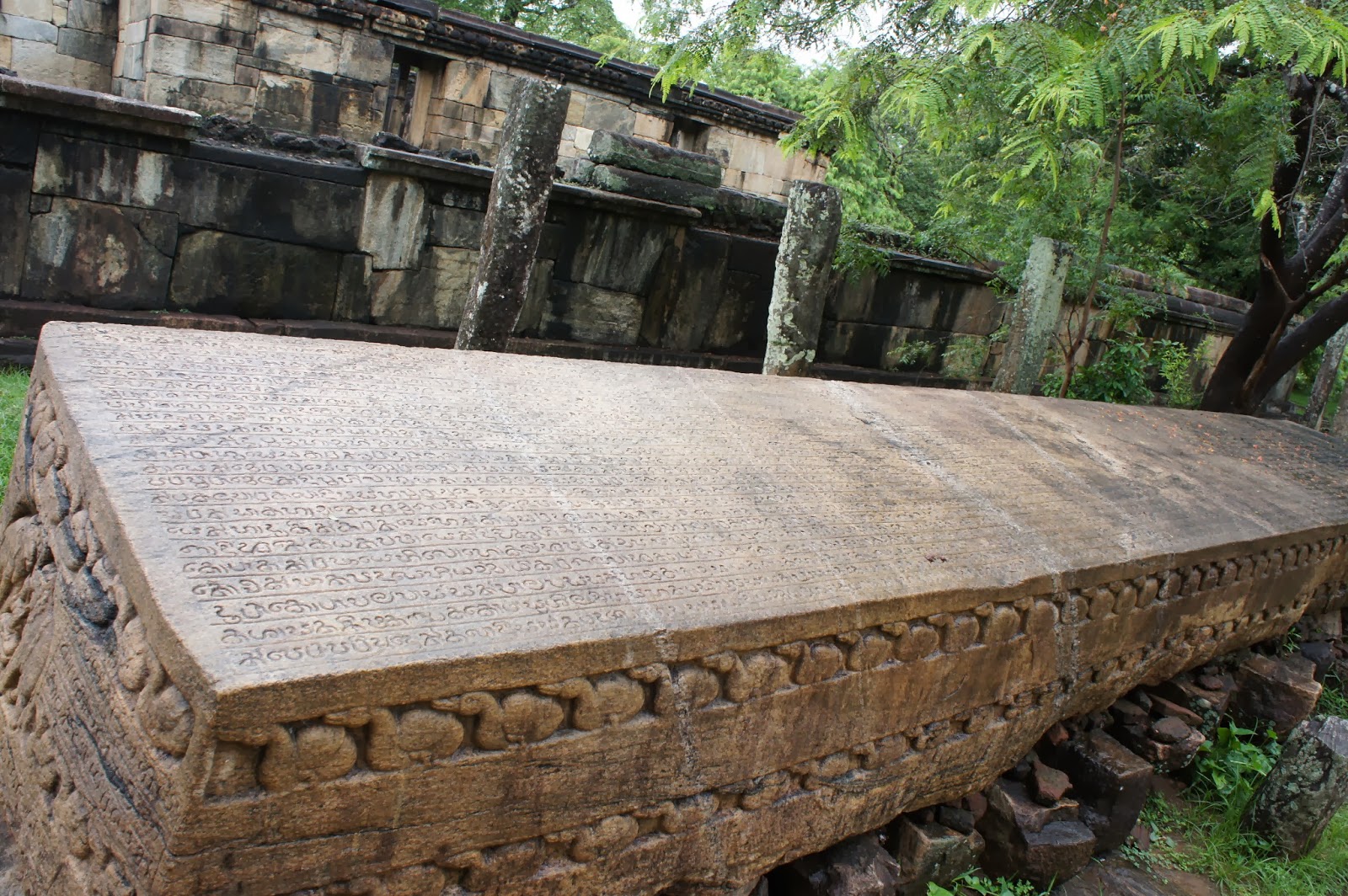










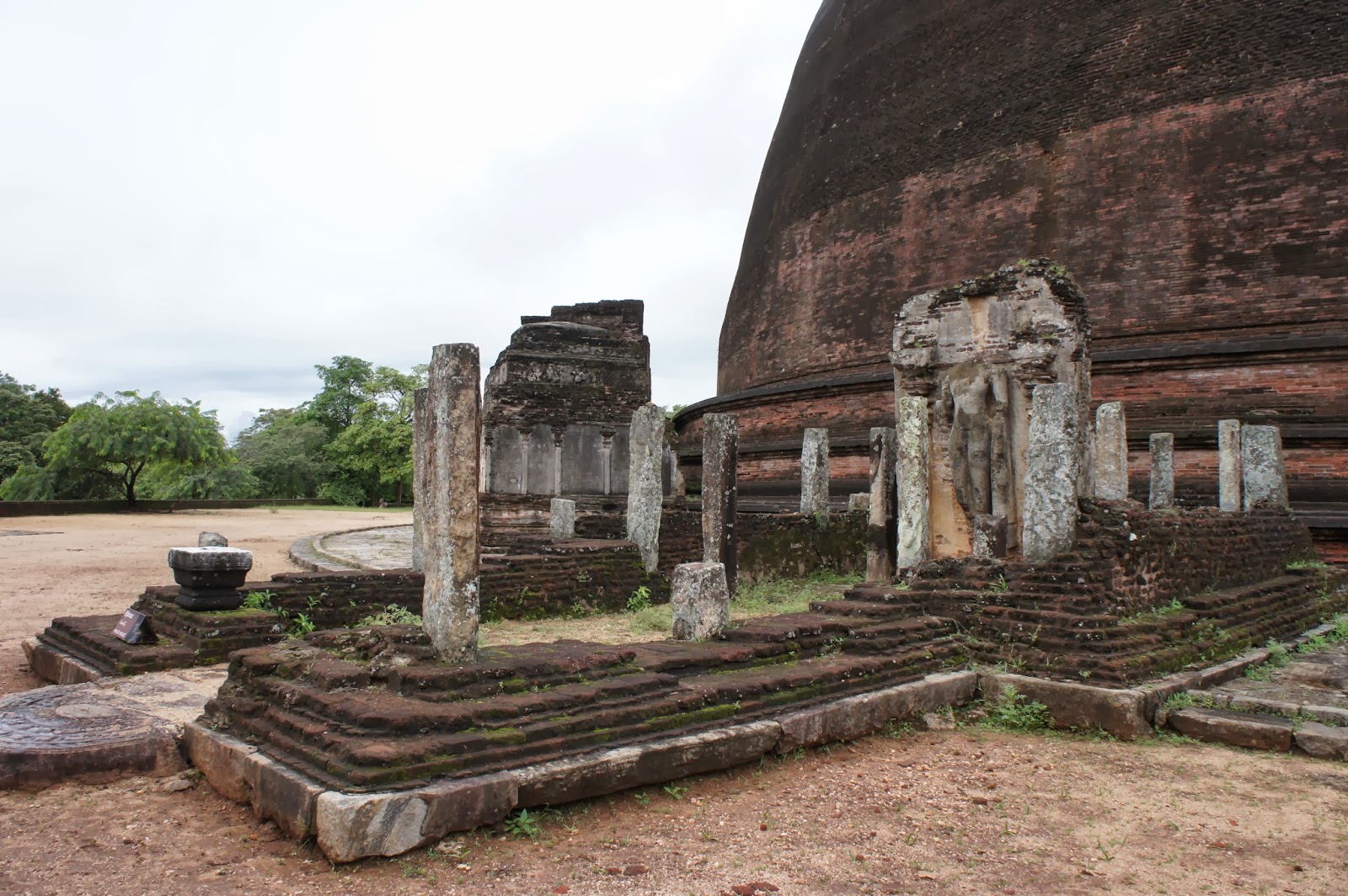





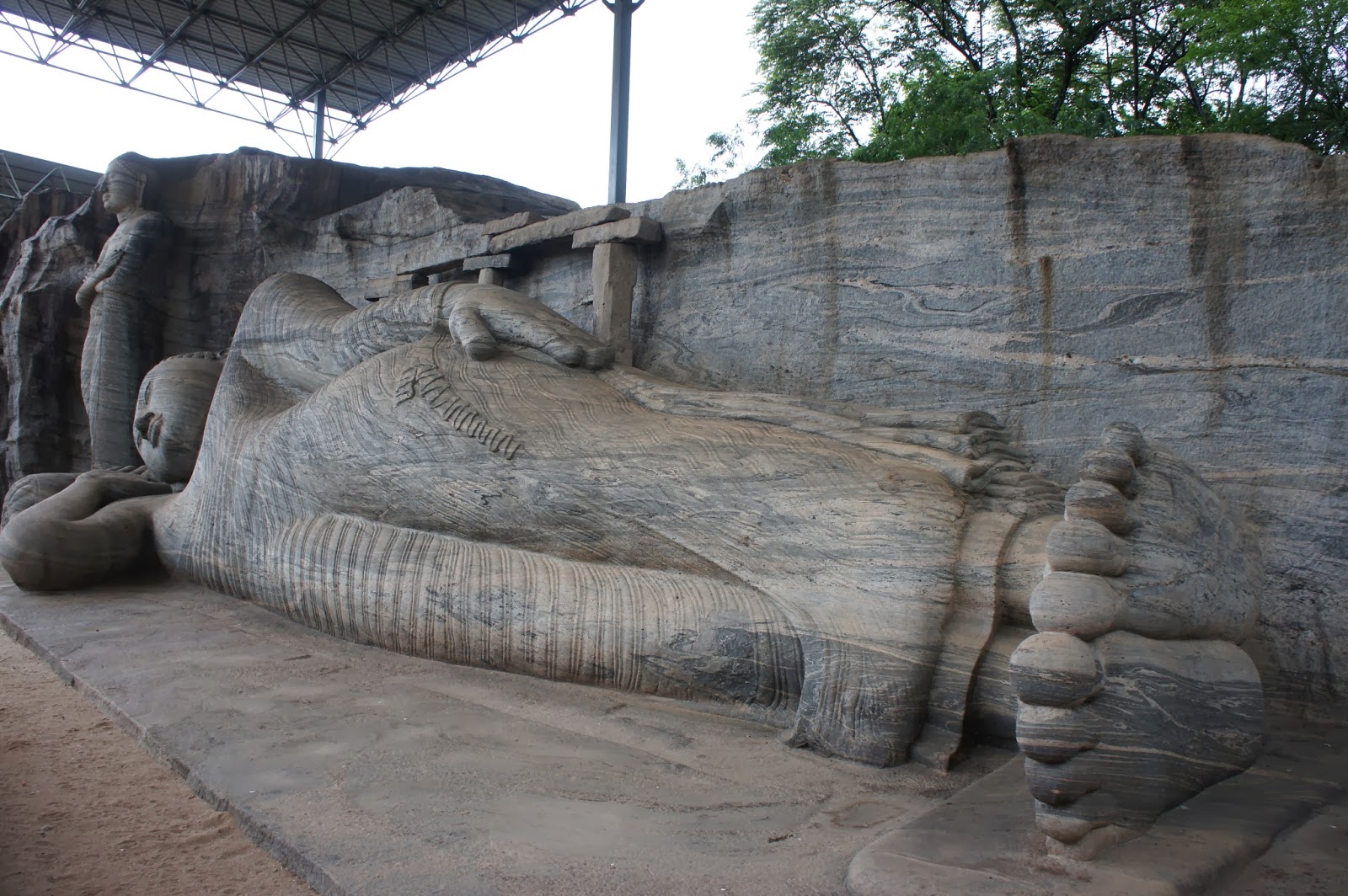




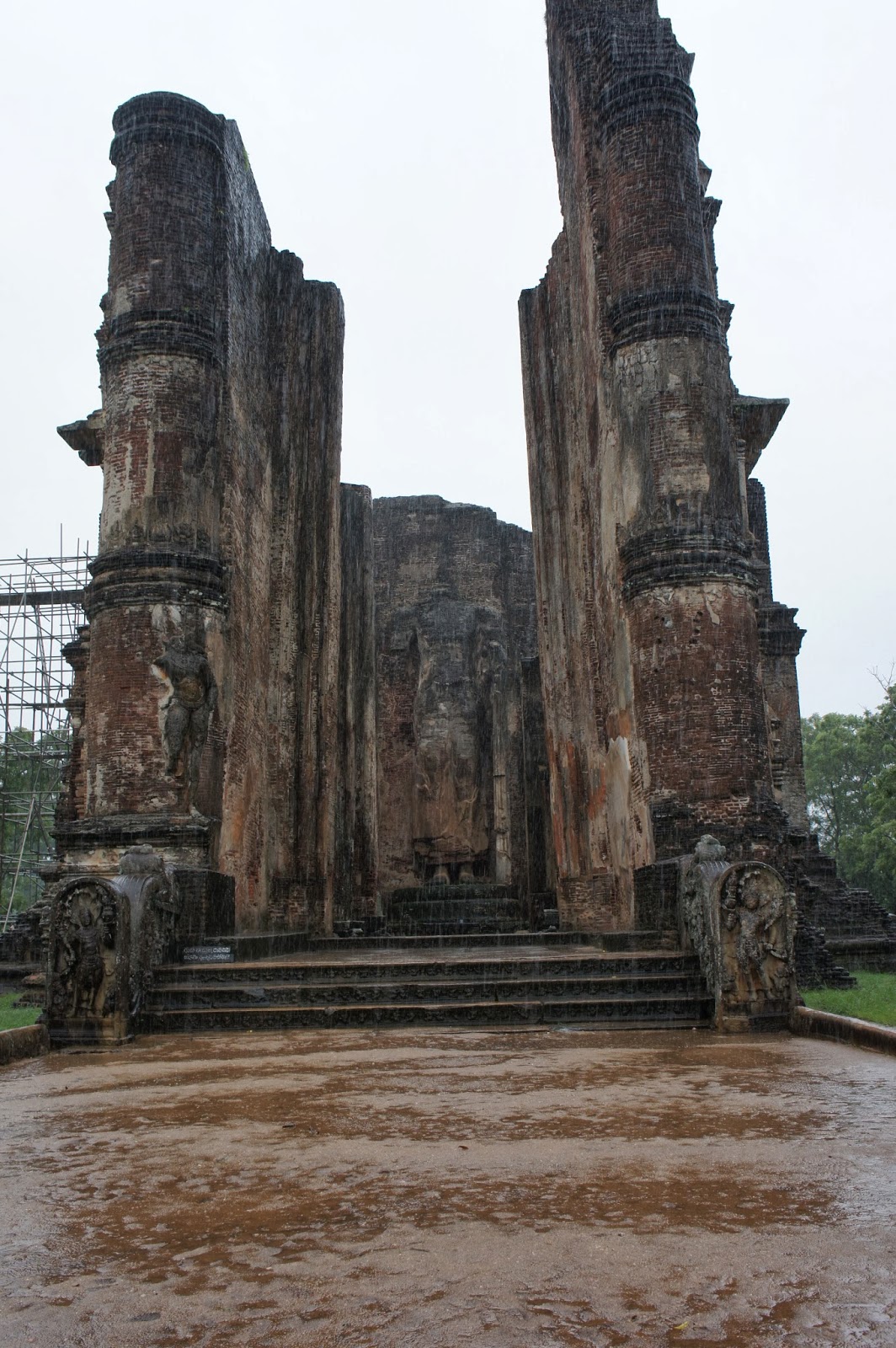



























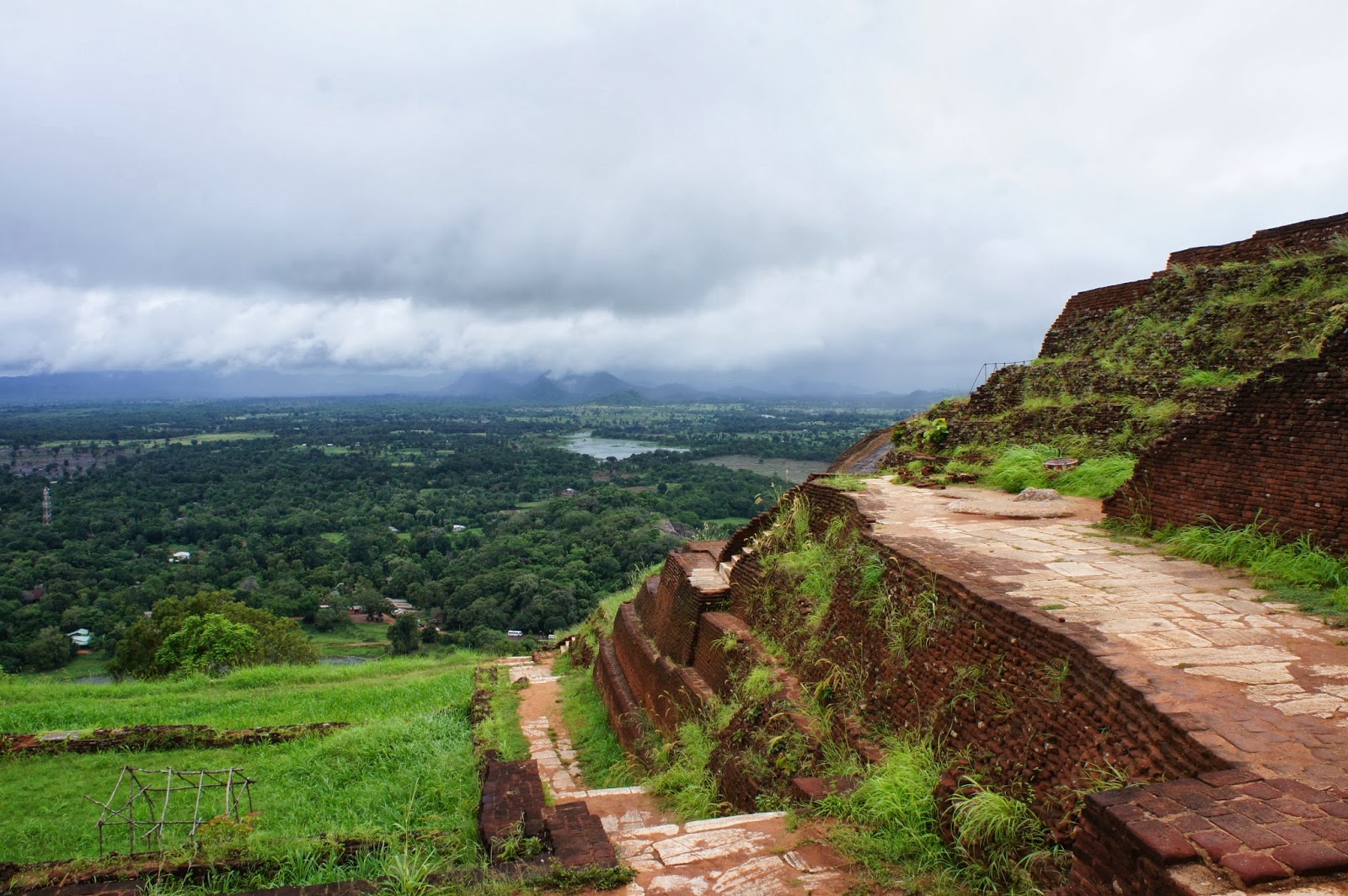






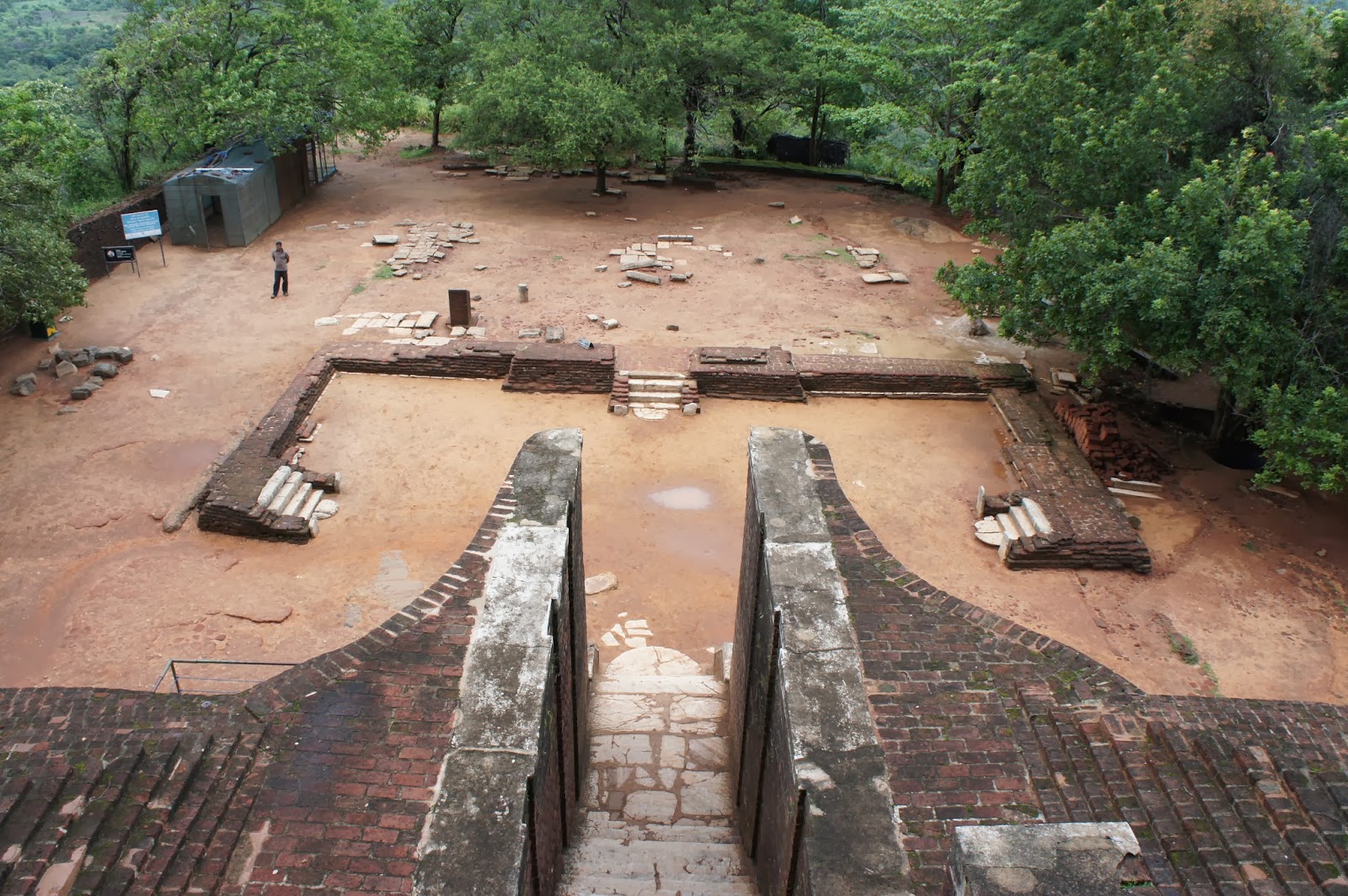

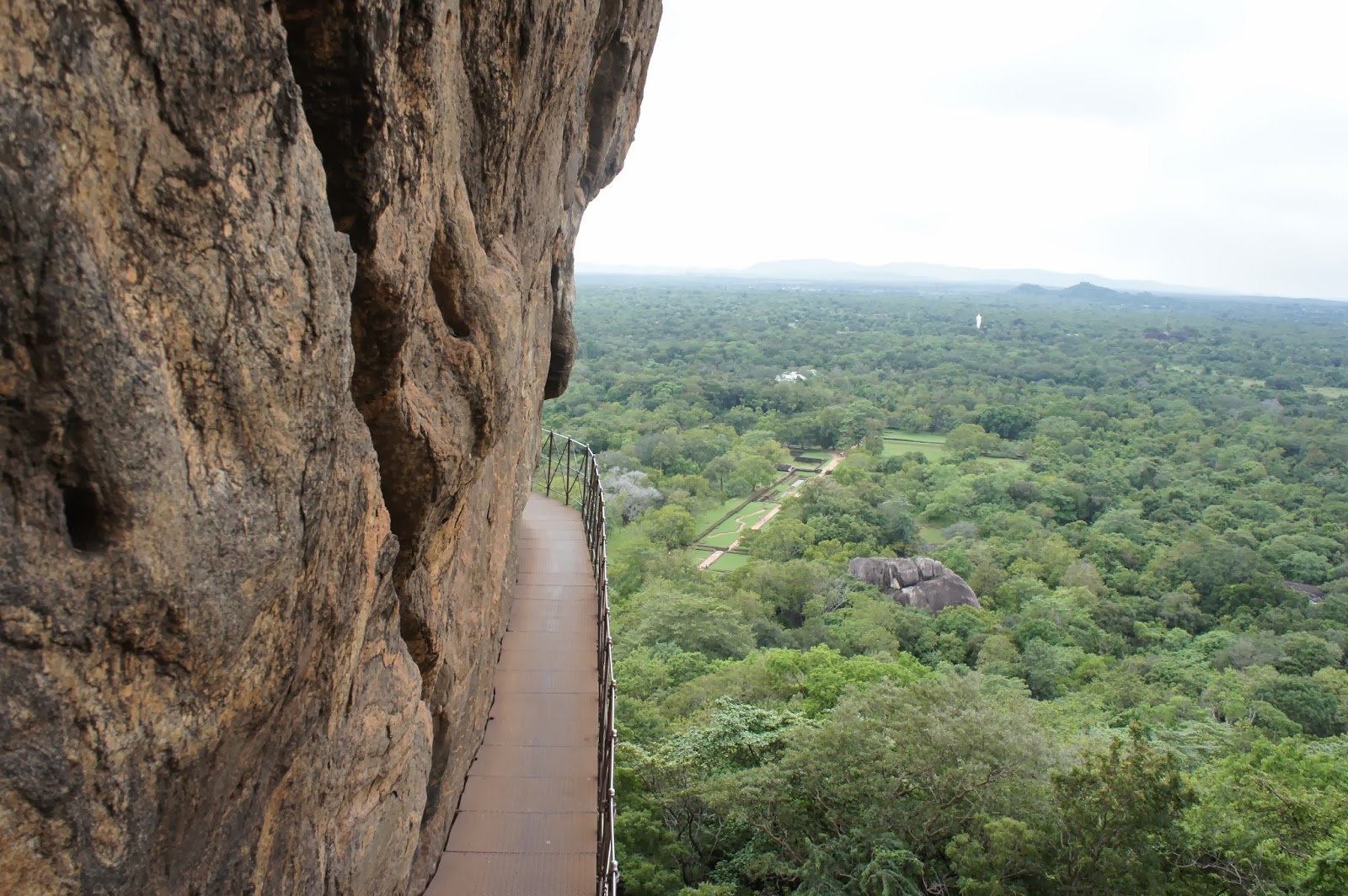













No comments:
Post a Comment